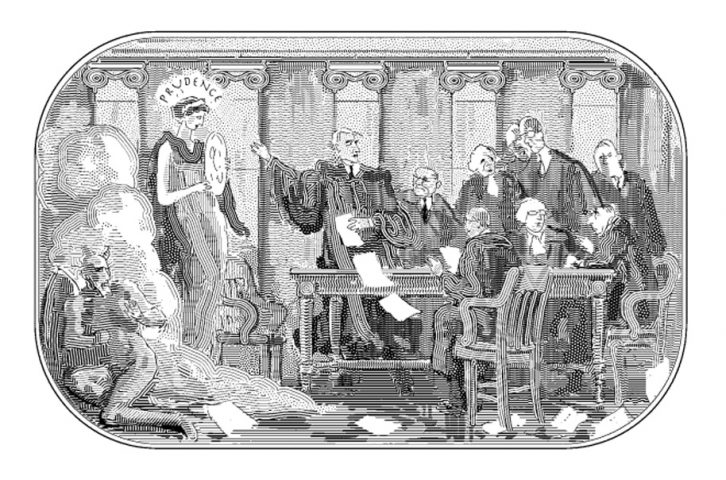From the president on down through his secretary of defense, the service secretaries, and a cast of generals whose decorations would choke an alpine meadow with color, we are told that further reductions in American military power are warranted and unavoidable. This view is supported by the Left, the Right that unwisely fears accounting more than war, by most of the press, the academy, and perhaps a majority of Americans—and it is demonstrably and dangerously wrong.
We are told, based upon nothing and ignoring the cautionary example of the Second World War, that we will never face two major enemies at once. We are told, despite the orders of battle of our potential adversaries and the fact that our response to insurgency has been primarily conventional, that the era of conventional warfare is over. And we are told that we can rest easy because military spending is an accurate index of military power, and we spend as much as the next however many nations combined.
But this takes no account of the nature of our commitments, the fading contributions of our allies, geography, this nation's size and that of its economy, conscription or its absence, purchasing power parity, exchange rate distortions, the military trajectories of our rivals individually or in combination, and the masking effects of off-budget outlays and occult expenditures. Though military spending comparisons are of lesser utility than assessing actual capabilities, they are useful, nonetheless, for determining a country's progress relative to itself.
From 1940 to 2000, average annual American defense expenditure was 8.5% of GDP; in war and mobilization years, 13.3%; under Democratic administrations, 9.4%; under Republican, 7.3%; and, most significantly, in the years of peace, 5.7%. Now we spend 4.6%, but, less purely operational war costs, 3.8% of GDP. That is, 66% of the traditional peacetime outlays. We have been, and we are, steadily disarming even as we are at war.
As in the 1930s, the economy is the supposedly humanitarian excuse for reducing the military, although the endless miseries of the world will not be alleviated if due to an imbalance of power great and little wars rage across it. When Rahm Emanuel fled the White House on his way to torment Chicago, he thanked the president for being "the toughest leader any country could ask for in the toughest times any president has ever faced" (emphasis mine). One cringes to think how this pronouncement would strike Madison as the capital burned, Lincoln in the years of civil war, Wilson during World War I and the influenza epidemic, and FDR through the Depression and the Second World War.
Otherwise, how accurate was Mr. Emanuel? In 1929, GDP was $103 billion, in 1933, $55 billion; a decline of 46%. In 2007, GDP was $14.061 trillion, in 2010, $14.870 trillion; an increase. Adjusted for inflation it was a decline, but of only one quarter of 1%. Nominal unemployment in 1929 was 3.2%, in 1933, with no safety nets, 25.2%. Nominal unemployment today is 9.6%.
At West Point last summer, President Obama said, commandingly, "[A]t no time in human history has a nation of diminished economic vitality maintained its military and political primacy." Except of course the United States, the very country of which he is president, which despite the most severe diminution of economic vitality in its history—twelve years, the economy cut in half—became the arsenal of democracy, sustained Britain and Russia, swept the seas clear of opposition, freed most of Europe, and conquered Japan—in the greatest war ever known.
The president's point was that despite whatever dangers we may face, the military must wait for the economy. But this is not so. Rather than dragging the economy down, putting the country on a war footing in 1940 revived it. Rearmament was a super-potent organizing principle and engine of production. Average GDP from 1931 to 1940 was $77.5 billion, and average unemployment 19%. By 1944, GDP had increased 271%, to $210 billion, unemployment had dropped to 1.2%, and real disposable personal income had more than doubled, despite the fact that by 1945 the country was spending just under 40% of GDP, and 86% of the Federal budget, on defense, at a time when marginal discretionary income was almost non-existent. And subsequently the war debt was retired with relative ease even as we enabled the rebuilding of Europe and defended it for half a century.
What does this tell us about defense spending? It tells us not only that it is not a poison, it can be an elixir. It tells us that it should proceed, therefore, not according to an ahistorical false premise, but in line with what is actually required to defend the United States. It tells us that, entirely independent of economic considerations, although not a dime should be appropriated to the military if it is not necessary, not a dime should be withheld if it is. The proof of this, so often and so tragically forgotten, is that the costs of providing an undauntable defense, whatever they may be, pale before blood and defeat. As for gauging necessity, we will have to deal with the rise of China, the slowly growing power of Russia, and the nuclearization of fanatic regimes, and even now we are not doing very well.
The strange, suicidal conviction now fashionable among the elite is that the customary vast reserves of power with which America maneuvers in the international system and, in extremis, wields in its defense, have become irrelevant to security and detrimental to the economy. All across the country, children are growing up who in the fire next time may pay for this prejudice with their lives. For a nation that has lost the unapologetic drive to defend itself cannot escape the consequences no matter how deft its self-deceptions or the extent to which, in contradiction of history and fact, error is ratified by common belief.
What argument, what savings, what economy can possibly offset the costs and heartbreak of a war undeterred or a war lost?



